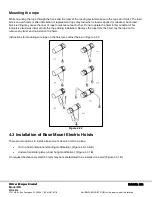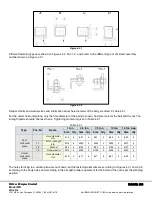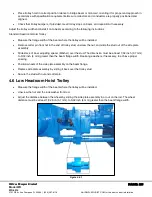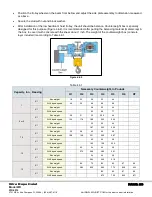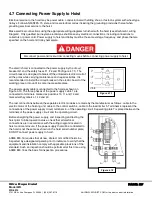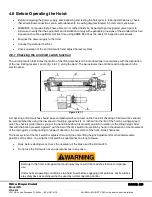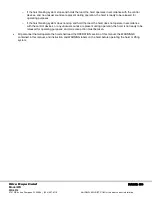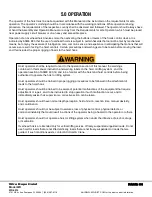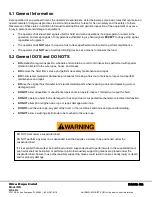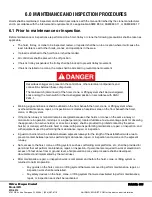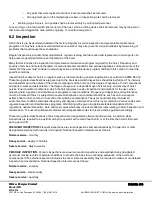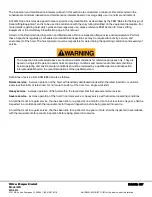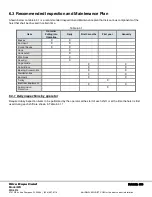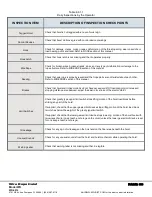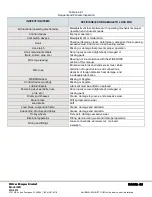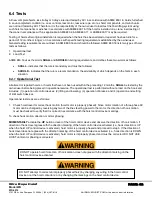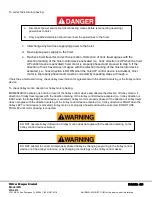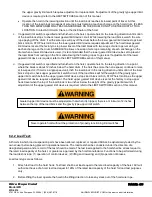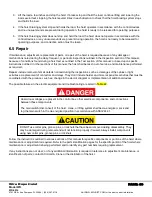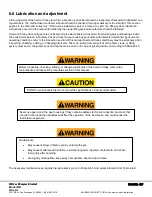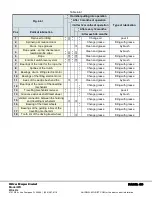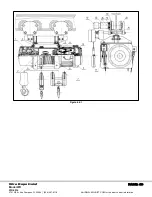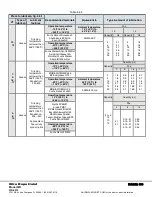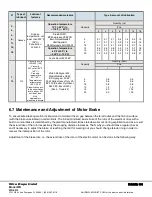
Wire Rope Hoist
PAGE: 36
Model WR
WR-0214
2721 NE 4
th
Ave Pompano FL, 33064 | (954) 367-6116
Visit WWW.ACIHOIST.COM for the most current information
o
Any parts that were replaced and other loose material shall be removed.
o
All equipment used in the maintenance, repair, or inspection work shall be removed.
Warning signs, barriers, and guards shall be removed only by authorized personnel.
Lock and tag on the main switch (disconnect) of the hoist, crane, or lifting device shall be removed only by the person
that locked and tagged the main switch originally, or an authorized person.
6.2 Inspection
All ACI hoists are inspected and tested at the factory. Regular in-service inspection and preventative maintenance
programs not only help reduce overall maintenance costs but may also prevent service shutdowns by forewarning of
problems that could cause these shutdowns.
Regular inspections, periodic minor adjustments, regular cleaning and lubrication and replacement of worn parts can
help preserve good performance and operation of the hoist.
Many factors influence the inspection and preventative maintenance program required for the hoist. Frequency and
severity of service and material handled, local environmental conditions and various applicable codes are some of the
factors that the user must consider to adjust inspection and maintenance program outlined in this section to meet the
specific conditions.
Inspection procedure for hoists in regular service is divided into two general classifications as outlined in ASME B30.16.
These two general classifications are based upon the intervals at which inspections should be performed. The intervals
are dependent upon the nature of the critical components of the hoist, and the degree of exposure of hoist components
and parts to wear and deterioration. The degree of exposure is dependent upon hoist activity, and severity of hoist
service. Environmental conditions in which the hoist operates are also important considerations for the user, when
adjusting hoist inspection and maintenance programs to local conditions. Frequency of inspection and maintenance
must be increased if hoist is subjected to severe atmospheric environmental conditions, such as corrosive vapors,
extreme heat or cold, cement or dust and other airborne contaminants. The user should carefully consider all
environmental conditions and adjust frequency and degree of maintenance for his local conditions. Various codes also
regulate inspection and maintenance programs. Attention must be given to applicable federal standards, OSHA
regulations, national standards, state and local codes which may include mandatory rules relating to hoist inspection and
maintenance. The user should become familiar with all applicable codes for his area and be guided accordingly.
These two general classifications of hoist inspection are designated as frequent and periodic. In addition, daily
inspections are required to be performed by the operator at the start of each shift, or at the time the hoist is first used
during each shift.
FREQUENT INSPECTION:
Frequent inspections are visual inspections and examinations by the operator or other
designated personnel with records not required. Nominal inspection intervals are as follows:
Normal service
- monthly
Heavy service
- weekly to monthly
Severe service
- daily to weekly
PERIODIC INSPECTION:
Periodic inspections are visual and audio inspections and examinations by designated
personnel making records of external conditions to provide the basis for a continuing evaluation of the hoist and
components. If the external inspection indicates the need, some disassembly may be required to make a more detailed
inspection and examination. Nominal inspection intervals are as follows:
Normal service
- annually
Heavy service
- semiannually
Severe service
– quarterly

